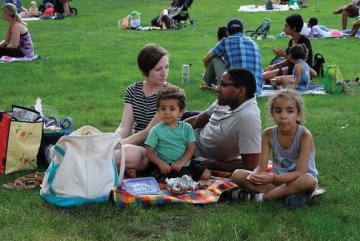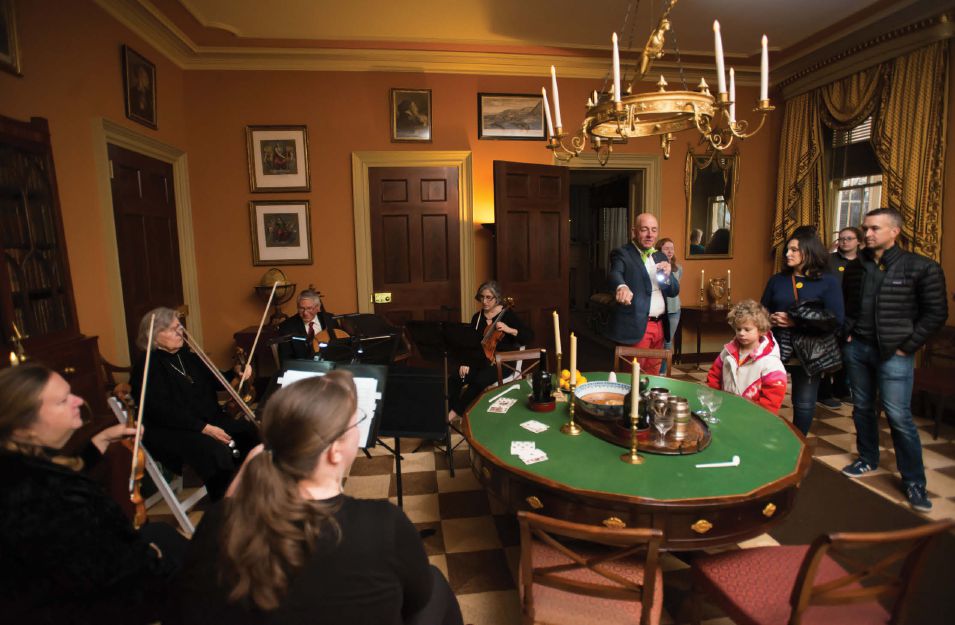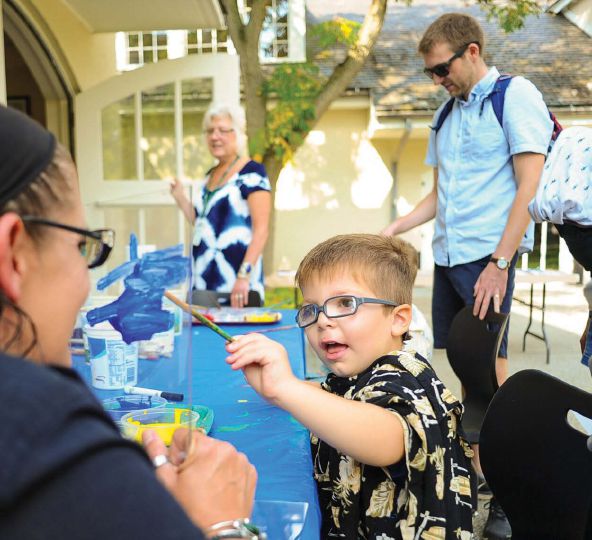
This article originally appeared in the May/June 2019 issue of Museum magazine, a benefit of AAM membership.
Many museums, particularly historic homes and sites, have public programs or partnerships that their public adores. Such programming might include an event that coincides with a holiday such as Halloween, a birthday celebration for a historic home’s family member, a festival tied to a local product or specialty, or a partnership with another beloved local institution.
In many instances, these local traditions are ingrained in the community’s collective memory, which creates an important emotional and nostalgic bond with your institution. The program may be what your site is known for, and it may be a reliable and much-needed source of revenue.

Yet, there is often a downside to these types of programs. They may not be mission supportive or encourage visitor diversity. Your staff may dread the planning and execution of these events. They may no longer serve their initial purpose. They may be so popular that your infrastructure is no longer able to safely or effectively sustain them.
But how do you begin to consider providing something different or—gasp!—eliminate a popular program altogether?
Museums face a great deal of trepidation and resistance when attempting to examine popular, long-standing events and partnerships. Public opinion, financial practicality, and board support can make it difficult to even think about changing course.
Nonetheless, it is entirely possible to let go of legacy events and create new ones that better meet the needs of your community, play to your staff’s strengths, bring in sufficient revenue, and maintain your institution’s professional integrity—all while not alienating your audiences and stakeholders.
Examples of Letting Go
Need encouragement for cutting the cord on a popular program? The Frick Pittsburgh; Boscobel House and Gardens in Garrison, New York; and Eastern State Penitentiary in Philadelphia each took a hard look at a legacy program and then thoughtfully planned its elimination.
At The Frick Pittsburgh, First Fridays were beloved and immensely popular. With an average attendance of 3,000, these events consisted of a concert with a popular (and expensive) musical act on the first Friday evening of each summer month.
Upon closer inspection, however, patrons rarely engaged with any part of the campus aside from the stage area, did not return to the museum for other offerings, and generated ill will with the institution’s neighbors by parking on residential streets and in driveways. After emergency medical technicians had difficulty navigating to an injured patron due to crowding, it was clear that the program needed to be rethought.
The Frick decided to cancel First Fridays, but it extended the museum’s hours until 9 p.m. every Friday in the summer and expanded programming across the site to relieve congestion and more fully engage audiences in the museum’s content. This programming, which includes smaller musical offerings, theater performances and family-friendly activities has attracted more local families, increased revenue and engagement with the mission of the institution, and is a better use of existing infrastructure.
Boscobel House and Gardens made the difficult decision to change an incredibly popular winter-themed event called Sparkle, which featured thousands of lights and luminous displays around the Boscobel gardens and grounds. While Sparkle attracted 5,000 people in one evening and provided a substantial revenue stream, it was also incredibly resource intensive and overly weather-reliant.

Boscobel leadership ended Sparkle and now holds Twilight Tours, which are candle-lit tours of the home’s interior that is decorated in period-appropriate ways for the holidays. The shift was made to support an institution-wide recommitment to mission- supportive programming and in response to the less-than-ideal toll the program took on the grounds and staff. Two seasons of Twilight Tours have generated a substantial increase in revenue compared with Sparkle, and both visitors and staff are happy with the switch.
Meanwhile, Eastern State Penitentiary (ESP) recently phased out the 24-year tradition of Bastille Day, which had helped the site grow from 17,000 to 250,000 visitors each year. But given the institution’s new mission and strategic plan, the decision to end Bastille Day was an easy one. Wisely, ESP used the ending of the program as a prominent way to communicate the institution’s new focus on using its site to deepen the national conversation about the legacy of American criminal justice reform. The final Bastille Day, in 2018, was promoted as a farewell tour and provided the community an opportunity to attend one last time and say goodbye. In addition, communications included the reasons behind retiring Bastille Day, namely that it required a lot of resources that would now be used to make ESP’s bold new vision a reality.
Managing the community’s expectations, acknowledging the past importance of this program, and providing the community with an opportunity to attend one last time helped ESP turn a potentially negative reaction into an effective launch of the institution’s new direction.
As The Frick and the Boscobel examples show, replacement programs and events can exceed the outcomes of the originals and robustly support the institutions in different ways. And for all, proper positioning and careful communication about the need for change set the stage for successful future programming.
Is It Time?
It’s important to consider the relevance and sustainability of every event or program your museum puts on, no matter how popular it is. Here are some big-picture questions to consider as you assess your programming. If possible, gather data so that your answers are as objective as possible.
- Is this event the best program we could be doing?
- Does it engage our visitors with our mission?
- Is it supporting our strategic goals?
- Are we reaching new audiences?
- Is this program sustainable in the areas of collections stewardship, staff, finance, and relevance?
When evaluating the actual cost of putting on a program, take into consideration more than just the financial resources.
- How much staff time is spent researching, planning, setting up, marketing, and facilitating this program?
- Does it require additional paid staff or the recruitment of volunteers to pull it off?
- What is the wear and tear on the grounds or collections?
- Is the site’s infrastructure appropriate for the number of visitors the event attracts?
- What mental toll does a resource-intensive program take on staff year after year?
- Is the organization a good steward of resources (staff, site, money, collections, living collections, structures) by holding this program?
As with an analysis of true costs, an analysis of true benefits should include more than just financial considerations.
- Does the museum garner favorable press and goodwill by holding this event?
- Does this program make a key donor happy or fulfill a governmental or granting foundation requirement?
- Does it allow the community to truly engage with the site and its content?
- Does it further the goals and milestones in the organization’s strategic plan?
Ultimately, every institution needs programming that both supports its mission and provides unique value to its visitors. When you take a close look at the true costs and benefits of your legacy programs, you might find that it’s time for a new experience. Like with the examples provided here, the new programming could exceed everyone’s expectations and benefit your museum in ways you never imagined.

Time for a Tweak
Do you have a popular event or program that isn’t fully serving your mission but isn’t completely off base? Ask yourself the following questions to see if it’s time to make some adjustments.
- Is there a better way to do this and still serve the same or possibly new audiences? Or, are you adequately serving this audience in other ways already?
- Could it be tweaked to better align with your mission and/or strategic plan?
- Can you make it more financially successful? Do you need to raise ticket prices? Can it be restructured to generate additional revenue?
- Has your staff or community changed in ways that require different approaches and outcomes?
- Who do you need to convince that a new direction is the right thing? What are their major concerns? Are there good PR opportunities for changing this program?







